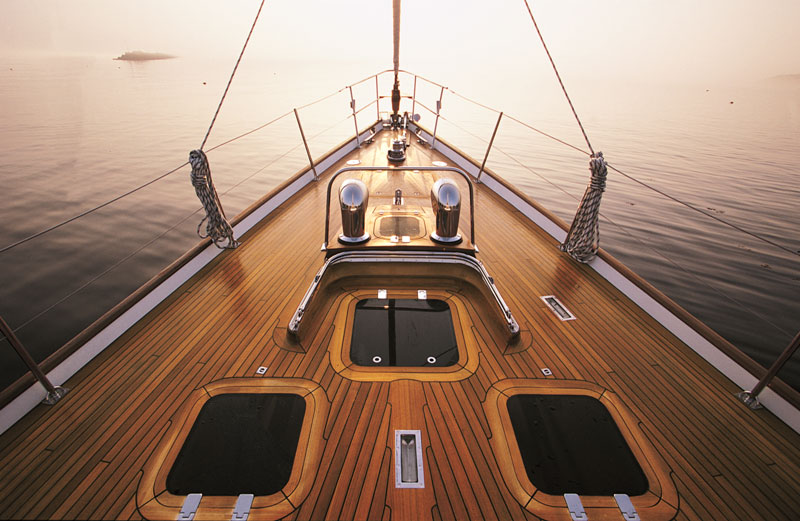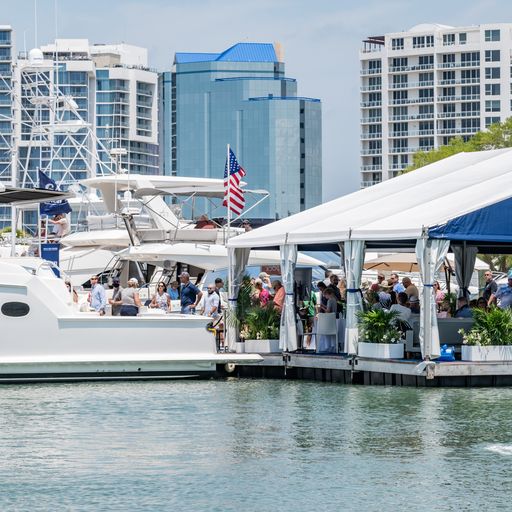Which Type of PFD Will Turn Most Unconscious People Face Up in the Water? Exploring Safety Options
Choosing the right Personal Flotation Device (PFD) can be a matter of life and death, especially in emergency situations when a person becomes unconscious in the water.

A Type I PFD is designed to turn most unconscious wearers face-up in open water. This is crucial for ensuring that even if someone is incapacitated, they have a better chance of breathing and surviving until rescue arrives.
Understanding the different types of PFDs is essential for anyone involved in water activities.
While Type I PFDs offer the highest level of buoyancy and are ideal for rough waters where rescue may be delayed, other types like Type II and Type III also provide significant buoyancy but do not guarantee turning an unconscious person face-up as effectively as Type I.

Selecting the appropriate PFD involves considering the type of activity, water conditions, and the specific features of each device.
Safety and legal requirements also play a role, making it important to choose a certified PFD.
Knowing which type of PFD to use can make all the difference in a critical moment on the water.
Key Takeaways
- Type I PFDs turn most unconscious wearers face-up.
- Different PFDs serve various water activities and conditions.
- Selecting the right PFD is vital for safety and compliance.
Understanding Personal Flotation Devices (PFDs)
Personal Flotation Devices (PFDs) are crucial for safety on the water. They help keep people afloat and can be lifesavers in emergencies. The U.S. Coast Guard approves five types of PFDs: Type I, II, III, IV, and V.
Type I
Type I PFDs are also known as offshore life jackets. They have the most buoyancy, often providing 22 pounds for adults.
Type I devices are designed to turn most unconscious people face up in rough or remote waters.
Type II
Type II PFDs are for calm, inland waters where quick rescue is likely. They offer 15.5 pounds of buoyancy for adults.
Type II devices may turn some unconscious wearers face up.
Type III
Type III PFDs are also known as flotation aids. They provide the same buoyancy as Type II, but they offer more freedom of movement.
Type III devices are suitable for activities like boating and fishing in calm waters.
Type IV
Type IV PFDs are throwable devices, like rings or cushions. They are not designed to be worn.
Type IV devices are meant to be thrown to a person who needs help staying afloat.
Type V
Type V PFDs are special-use devices. They are often designed for specific activities like kayaking or windsurfing.
Type V devices must be worn according to label instructions for them to meet safety requirements.
Each PFD type serves a specific purpose and offers different levels of buoyancy and safety. Always check the label to ensure the PFD is U.S. Coast Guard approved.
Types and Uses of PFDs
Various types of Personal Flotation Devices (PFDs) serve different purposes based on activities and water conditions. Understanding their specific uses can help improve safety during boating, kayaking, and other water-based activities.
Type I PFD: Offshore Life Jackets
Type I PFDs, also known as Offshore Life Jackets, are the most buoyant and provide the highest level of safety. They are designed for open, rough, or remote waters where rescue operations may take longer.
These life jackets provide at least 22 pounds of buoyancy. They are capable of turning most unconscious wearers face-up in the water, reducing the risk of drowning. Offshore life jackets are bulky but extremely reliable.
They are ideal for activities such as offshore fishing, sailing, or cruising. These PFDs are made from durable materials that can withstand harsh conditions for extended periods. Their bright colors and reflective tapes make wearers more visible in low-light conditions.

Type II PFD: Near-Shore Buoyant Vests
Type II PFDs, or Near-Shore Buoyant Vests, are less bulky than Type I but still offer significant buoyancy. They are best suited for calm, inland waters where quick rescue is likely.
These vests are designed to turn some unconscious wearers face-up in the water. However, they are not as reliable as Type I PFDs in this respect.
Type II PFDs are commonly used in recreational boating and other activities like canoeing and kayaking. They provide up to 15.5 pounds of buoyancy. While they are less comfortable for long-term wear, they improve safety significantly in near-shore settings.
Type III PFD: Flotation Aids
Type III PFDs, or Flotation Aids, are the most comfortable for constant wear and are designed for calm, inland waters where quick rescue is likely. They are widely used in activities where freedom of movement is important.
These PFDs provide a minimum of 15.5 to 20 pounds of buoyancy. Unlike Type I and II, they generally do not turn unconscious wearers face-up but do provide adequate flotation.
Type III PFDs are popular for kayaking, water skiing, and fishing. They come in various styles, including life vests and float coats, allowing for flexibility and comfort. They are often preferred for their lightweight design and ease of movement.

Type IV PFD: Throwable Devices
Type IV PFDs are designed to be thrown to a person in the water instead of being worn. Common types include ring buoys and buoyant cushions.
These devices are not meant for continuous wear but provide emergency flotation when thrown to someone needing help. They do not have the ability to turn an unconscious person face-up.
Type IV PFDs are required on boats over a certain size and are typically used as a backup safety measure. They are also useful for situations where someone falls overboard and needs immediate assistance. Ring buoys are commonly seen on docks and commercial vessels.
Type V PFD: Special Use Devices
Type V PFDs, or Special Use Devices, are tailored for specific activities and come with various features. They are only approved for use in the designated activity.
Examples include deck suits, work vests, and hybrid PFDs with integrated harnesses. These devices can have various buoyancy levels and are designed to offer more freedom of movement.
Type V PFDs are used in specialized activities such as racing, windsurfing, and commercial fishing. They provide specific functionality needed for these tasks, ensuring safety and performance without compromising comfort.
Key Features of PFDs
Personal Flotation Devices (PFDs) come in various types, each with unique features. These features affect their buoyancy, comfort, and effectiveness.
Buoyancy
Buoyancy is a measure of how much weight a PFD can support in water.
Type I PFDs offer the most buoyancy, suitable for rough waters. They can turn most unconscious wearers face-up.
Type II and Type III PFDs are less buoyant but provide sufficient support for calmer waters.
Material
Foam PFDs are inherently buoyant and require no action to activate. They are generally bulky and can be uncomfortable but offer consistent buoyancy.
Inflatable PFDs provide more buoyancy but must be activated by the wearer. They are less bulky and more comfortable for long-term wear. Some models are a combination of foam and inflatable materials.
Design
Many PFDs include straps and adjustable features to ensure a snug fit.
Reflective tape is often added for better visibility in low light conditions.
Comfort and Practicality
Float coats are special use devices combining warmth and buoyancy, often used in cold waters.
The color of PFDs is also important; they usually come in bright, easily visible colors.
Manufacturer's Instructions
Always follow the manufacturer's instructions for maintenance and usage.
Properly adjusted PFDs are more effective and comfortable to wear.
Special Use Devices
There are PFDs designed for specific activities, such as kayaking or windsurfing.
These are known as special use devices and are tailored to offer the best combination of comfort and buoyancy for those activities.
Selecting the Right PFD
Finding the right personal flotation device depends on who will be wearing it and what activities they'll be doing.
Think about size, comfort, water conditions, and activity-specific needs.
For Adults
When choosing a PFD for adults, consider their size and weight to ensure proper buoyancy.
Type I PFDs are ideal for offshore or stormy conditions.
Type I life jackets are bulkier but offer the best chance of turning an unconscious wearer face-up.
For general boating or calm waters, Type III PFDs are more comfortable and allow better movement.
Always look for adjustable straps to ensure a snug fit.
For Children
Children need PFDs specifically tailored for their body size and weight.
Look for child-sized PFDs with a handle on the collar to pull the child out of the water easily.
Type II PFDs are recommended for children as they offer more buoyancy and help to turn the child face-up.
Make sure the PFD is comfortable and has crotch straps to keep it secure.
Never buy a PFD for a child to "grow into."
According to Activity
Different water activities may require different types of PFDs.
For water skiing or activities in heavy boat traffic, a Type III PFD is generally suitable as it provides freedom of movement and sufficient buoyancy.
For fishing or boating alone in potentially rough waters, a Type II or Type I PFD is more appropriate because of their ability to turn an unconscious person face-up.
Consider the water conditions and your swimming ability when choosing the right PFD.
PFDs for Unconscious Wearers
When choosing a personal flotation device (PFD) for an unconscious person, it's important to select one that effectively turns the wearer face-up in the water.
Type I PFDs are designed for this purpose. They provide the most buoyancy and are effective in all waters, especially open, rough, or remote areas where rescue may be delayed.
Type I PFDs can turn most unconscious wearers face-up, offering critical head protection by keeping the wearer’s head higher above the water.
Types and Their Effectiveness
- Type I PFDs:
- Buoyancy:
- Adult: at least 22 pounds
- Child: 11 pounds minimum
- Benefits:
- Works well for offshore and remote waters
- Turns most unconscious wearers face-up
- Offers high buoyancy and retains body heat
- Buoyancy:
- Type II PFDs:
- Buoyancy:
- Adult: 15.5 pounds
- Inflatable: up to 22.5 pounds
- Benefits:
- Suitable for calm, inland waters
- May turn some unconscious wearers face-up
- Offers less protection in rough waters
- Buoyancy:
- Type V PFDs:
- Usage:
- Specialized, for specific activities like kayaking or windsurfing
- Turning Capability:
- Limited capabilities for unconscious wearers
- Check specific model features for unconscious protection
- Usage:
Type I PFDs are the best choice for ensuring unconscious people are turned face-up. Type II can offer some protection, but less reliably. Type V PFDs are for specialized activities and may not be suitable for unconscious persons unless specifically designed for that purpose.
Maintenance and Care of PFDs
Regular maintenance and care of Personal Flotation Devices (PFDs) are crucial for ensuring they perform well during emergencies.
Small damages such as rips, tears, and holes can compromise a PFD's safety.
Inspect your PFD regularly for these issues, and repair or replace it as needed.
Hardware like buckles, straps, and zippers must be checked for functionality.
Broken hardware can render a PFD useless in an accident.
Keep an eye on these parts and fix any problems immediately.
Store PFDs away from direct sunlight to prevent fabric from deteriorating.
Prolonged exposure to UV rays can weaken the material and reduce the life vest’s effectiveness.
After using a PFD in salt water, it is important to rinse it with fresh water.
Salt can corrode the material and hardware, leading to quicker deterioration.
When not in use, store PFDs in a cool, dry place.
Mold and mildew can grow on damp life vests, affecting their visibility and buoyancy.
Regular tests of your PFD are also vital.
Make sure it still provides enough buoyancy and stays secure during use.
Simply wearing and using it in a controlled environment like a pool can be a good test.
Safety and Legal Requirements
Personal Flotation Devices (PFDs) are crucial for safety on the water.
The U.S. Coast Guard requires that all recreational vessels carry approved life vests for each person on board.
Life jackets must be readily accessible and properly fitted. This ensures they can be quickly put on in an emergency.
The most effective PFD for turning unconscious people face up in the water is the Type I Offshore Life Jacket.
Type I PFDs are recommended for rough waters and open seas where immediate rescue might be delayed.
They are designed to provide maximum buoyancy and support extended survival in the water.
Specifications:
- Adult Size: Minimum 22 lbs buoyancy
- Child Size: Minimum 11 lbs buoyancy
These life vests can be bulky, but their design offers the best protection, increasing the chances of survival in severe conditions.
Proper storage of life jackets on a boat is essential.
They should be kept in a place where they are easily accessible in case of an emergency.
Wearing a life jacket, especially a Type I PFD, can significantly reduce the risk of drowning.
The law mandates that life jackets must be worn and should comply with Coast Guard standards for safety and effectiveness.
Ensuring all safety requirements are met is vital for reducing risks and enhancing safety on the water.
Frequently Asked Questions
Knowing the best type of personal flotation device (PFD) for turning most unconscious people face-up in the water is critical. This part covers key questions about PFD use, sizing, types, maintenance, and functionality.
When is the appropriate time to utilize a personal flotation device?
A personal flotation device should be used whenever you are on or near water where there is a risk of falling in.
This includes boating, kayaking, water sports, and fishing.
Even strong swimmers should wear a PFD to ensure safety in case of accidents or sudden emergencies.
How does one determine the correct size for a PFD?
To find the right size, check the manufacturer's sizing chart.
PFDs usually come in sizes based on chest measurements.
Make sure it fits snugly without being too tight.
You can test the fit by trying it on and lifting your arms; it shouldn't move too much or come over your chin.
What distinguishes a Type IV PFD, and when should it be used?
A Type IV PFD is a throwable device, not worn like a vest. It includes things like ring buoys and cushions.
It is designed to be thrown to a person in the water to grasp and stay afloat until they can be rescued.
These are commonly found on boats for emergency situations.
What are the maintenance requirements for a PFD with a CO2 cartridge?
For PFDs with CO2 cartridges, regularly inspect the cartridge for corrosion or damage and ensure it is properly seated in the mechanism.
Follow the manufacturer’s guidelines for rearming or replacing the cartridge after usage.
Also, check for leaks, tears, and functionality of the inflation system periodically.
How do Type I and Type II PFDs differ in terms of functionality?
Type I PFDs are designed for open, rough, or remote waters where rescue might take longer.
They are very buoyant and can turn most unconscious wearers face-up.
Type II PFDs are suitable for calmer, inland waters and can turn some unconscious wearers face-up, though not as reliably as Type I PFDs.
Are Type III PFDs designed to keep an individual afloat in various water conditions?
Type III PFDs are best for calm, inland waters with a quick rescue likely.
They provide good buoyancy and are more comfortable for continuous wear. However, they are not designed to turn an unconscious wearer face-up.
They are intended for activities like water skiing, fishing, and kayaking.
Charlie is Editor-in-Chief of Sea Magazine







